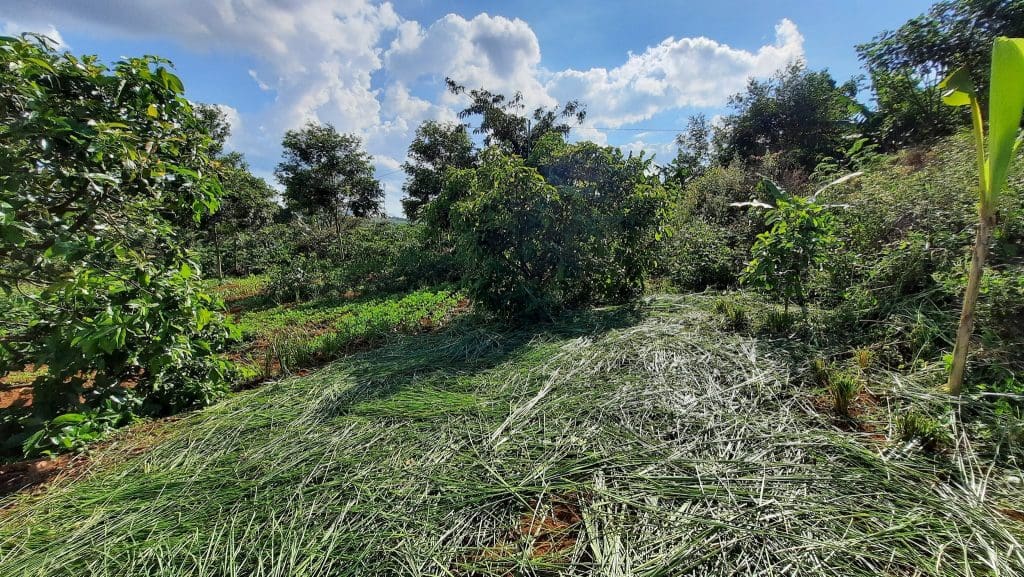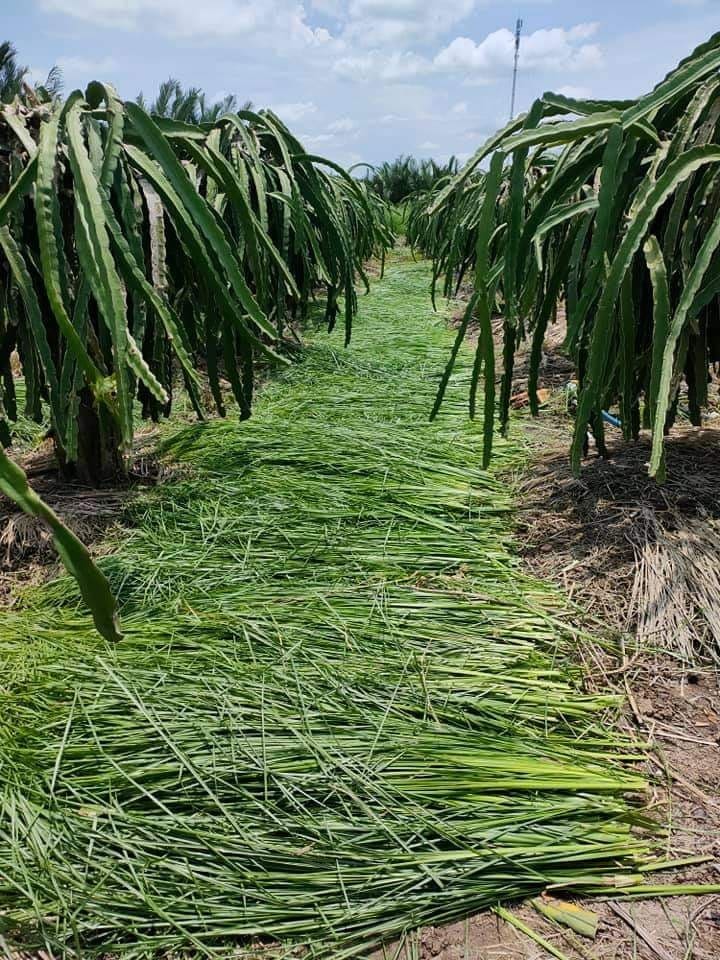Vetiver Mulch

Vetiver grass leaves are recognized as an excellent form of crop mulch. Indian coffee estate managers in Ethiopia introduced vetiver for coffee mulching 50 years ago and the practice is still used today. The growing interest in permaculture practices, where mulching is an important component, and the occurrence of more frequent droughts and higher soil temperatures, provides for renewed opportunities for vetiver mulch. Vetiver makes an excellent mulch and is being used as a biproduct of vetiver conservation hedgerows. Under tropical rainfall conditions vetiver can produce (3 cuts a year) a total of 130 tons of dry matter/ha, equivalent to about 1 ton/100 linear meters of hedge. The mulch is long lasting, and when first laid down in its green state is resistant to insects (particularly termites). Later when it decomposes and incorporated into the soil it raises soil organic matter by as much as 3%. There is a growing trend in some tropical countries to embed vetiver into orchards, vegetable gardens for soil conservation, mulch and soil fertility enhancement. – chop and drop system. The vetiver mulch controls weeds, improves soil moisture, reduces soil erosion, reduces soil temperatures, improves soil organic matter, and has been reported to prevent fungal diseases in associated plants (irises). A remarkable plant!
The combination of soil conservation with mulching makes vetiver very attractive to small garden/farms so typical of the tropical economies.


in the form of “chop and drop”. Vetiver mulch is long lasting and has multiple benefits.
Feedback from a gardener in Belize on the impact of vetiver mulch
Beginning late September 2002, mature vetiver grass plants have been systematically cut for mulching material. These mature plants have grown to a height of about 170 cm and have sent out flower stalks that droop over. For cutting the grass I mostly use pruning loppers, of the type that would normally be used for cutting off small tree branches. I cut the grass right down fairly close to the base of the plant leaving a stump with stem lengths of only 6 to 12 cm. After the stump has re-grown for a few weeks I then drench the re-growth with a liquid fertilizer containing micronutrients. By doing this I figure I can convert inexpensive chemical fertilizer into high quality organic fertilizer once the grass is cut for mulch. Beginning back in 1997, I constructed the garden as a raised bed gardening system. The construction of the raised beds was time consuming and labor intensive. In the dry season the beds would dry out rock hard and then when the rainy season began, the beds would rapidly become covered in weeds, which were difficult to eliminate. During this period, I used wood shavings as mulch between the raised beds. Now, I have abandoned the raised bed method and have switched to a vetiver grass mulch bed system on level ground with little or no digging. The rows of vetiver are spaced about 280 cm apart and the area between the rows is covered with vetiver grass mulch. Over time the grass mulch should break down forming a bed of rich organic matter. The mulched soil between the rows of vetiver is already improving with respect to drainage, moisture-holding capacity, weed suppression, and in the fertility. Further, the rows of vetiver will function as an effective windbreak, especially tempering the hot, drying winds that blow during the dry season. In conclusion, the use of vetiver grass as applied to my gardening project, is having a positive impact on the entire ecology of the garden area. Previously, I experimented with all sorts of different gardening techniques but this vetiver mulch system is the only one that is showing clear evidence that a continuous improvement is taking place.
Vetiver System for Agriculture CHN_VS_agdev.pdf (vetiver.org) contains some interesting text on vetiver mulch as well as other interesting observations based on scientific research in China.
This Facebook page Vietnam Vetiver Farmers Group has some excellent images of vetiver used as mulch. (20+) VIETNAM VETIVER FARMERS – NÔNG DÂN VETIVER VIỆT NAM – VVF | Facebook
Our website search engine delivers some interesting articles and notes relating to vetiver and mulch. Search on “mulch”